2024
|
 | Barna, Milan; Mihál, Ivan Indicators of restoration in beech stands after air pollution: trees and macromycetes Journal Article Folia Oecologica, 51 (2), pp. 185–195, 2024, ISSN: 1338-7014. Abstract | Links | BibTeX @article{Barna_2024,
title = {Indicators of restoration in beech stands after air pollution: trees and macromycetes},
author = {Milan Barna and Ivan Mihál},
url = {http://ife.sk/wp-content/uploads/2020/09/foecol-2024-0018.pdf},
doi = {10.2478/foecol-2024-0018},
issn = {1338-7014},
year = {2024},
date = {2024-07-01},
journal = {Folia Oecologica},
volume = {51},
number = {2},
pages = {185–195},
publisher = {Walter de Gruyter GmbH},
abstract = {The aluminium smelter in Žiar nad Hronom has operated since 1953. As a result, the surrounding area is now one of the most polluted regions in Slovakia. Since the implementation of new production and filtration technologies in 1996, the amount of emissions has significantly decreased. Our aim was to evaluate the long-term restoration of an environment that has been damaged by fluorine-based air pollutants. We analysed the contamination of forest ecosystems in three beech stands at various distances from the emission source (2, 7, and 18 km). Signs of restoration in adult beech trees were observed through a decrease in defoliation and a reduction in the necrotic disease of the bark in tree crowns. However, the impacts of air pollution on ectomycorrhizal associations persist. In the reduced number of ectomycorrhizal fungal species (16 species in the polluted stand compared to 38 species in the control stand), the low representation of sensitive fungal orders (Cantharellales, Gomphales, and Boletales), and the indices of species richness and heterogeneity (Hill, Margalef, Simpson, and Shannon–Weaver). In some respects, the findings indicate that the beech ecosystem is capable of revitalization within 25 years after a reduction in air pollution. However, much more sensitive indicators of successful restoration, compared to the characteristics of the trees, are the communities of macromycetes.},
keywords = {},
pubstate = {published},
tppubtype = {article}
}
The aluminium smelter in Žiar nad Hronom has operated since 1953. As a result, the surrounding area is now one of the most polluted regions in Slovakia. Since the implementation of new production and filtration technologies in 1996, the amount of emissions has significantly decreased. Our aim was to evaluate the long-term restoration of an environment that has been damaged by fluorine-based air pollutants. We analysed the contamination of forest ecosystems in three beech stands at various distances from the emission source (2, 7, and 18 km). Signs of restoration in adult beech trees were observed through a decrease in defoliation and a reduction in the necrotic disease of the bark in tree crowns. However, the impacts of air pollution on ectomycorrhizal associations persist. In the reduced number of ectomycorrhizal fungal species (16 species in the polluted stand compared to 38 species in the control stand), the low representation of sensitive fungal orders (Cantharellales, Gomphales, and Boletales), and the indices of species richness and heterogeneity (Hill, Margalef, Simpson, and Shannon–Weaver). In some respects, the findings indicate that the beech ecosystem is capable of revitalization within 25 years after a reduction in air pollution. However, much more sensitive indicators of successful restoration, compared to the characteristics of the trees, are the communities of macromycetes. |
2021
|
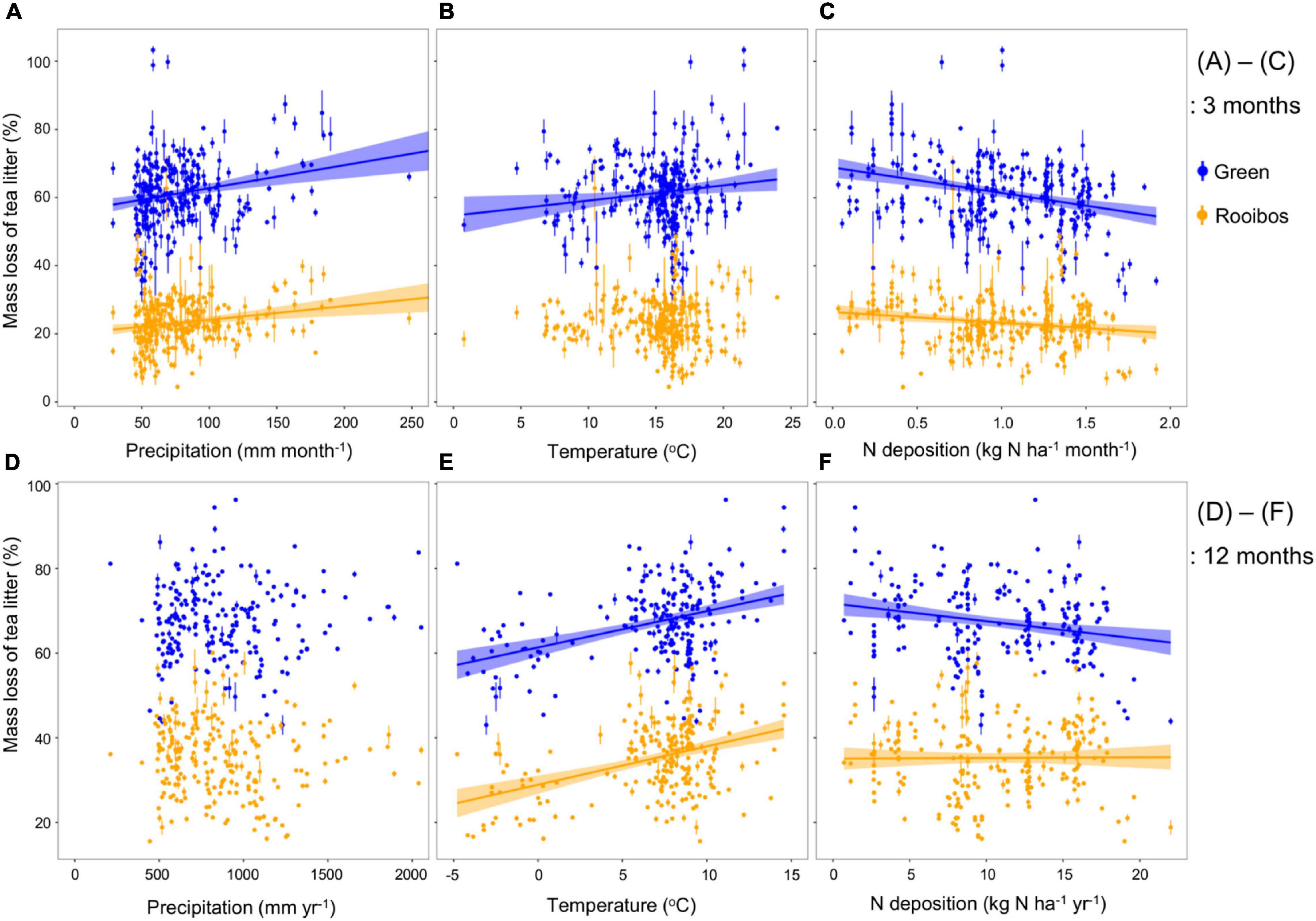 | Kwon, Taeoh; Shibata, Hideaki; Kepfer-Rojas, Sebastian; Schmidt, Inger Kappel; Larsen, Klaus Steenberg; Beier, Claus; Berg, Björn; Verheyen, Kris; Lamarque, Jean-Francois; Hagedorn, Frank; Eisenhauer, Nico; Djukic, Ika; Borovská, Jana; Gerhátová, Katarína; Mojses, Matej; Kanka, Róbert; Rusňák, Tomáš; Piscová, Veronika; Barna, Milan Effects of climate and atmospheric nitrogen deposition on early to mid-term stage litter decomposition across biomes Journal Article Frontiers in Forests and Global Change, 4 , 2021, ISSN: 2624-893X. Abstract | Links | BibTeX @article{Kwon2021,
title = {Effects of climate and atmospheric nitrogen deposition on early to mid-term stage litter decomposition across biomes},
author = {Taeoh Kwon and Hideaki Shibata and Sebastian Kepfer-Rojas and Inger Kappel Schmidt and Klaus Steenberg Larsen and Claus Beier and Björn Berg and Kris Verheyen and Jean-Francois Lamarque and Frank Hagedorn and Nico Eisenhauer and Ika Djukic and Jana Borovská and Katarína Gerhátová and Matej Mojses and Róbert Kanka and Tomáš Rusňák and Veronika Piscová and Milan Barna},
doi = {https://doi.org/10.3389/ffgc.2021.678480},
issn = {2624-893X},
year = {2021},
date = {2021-07-14},
journal = {Frontiers in Forests and Global Change},
volume = {4},
abstract = {Litter decomposition is a key process for carbon and nutrient cycling in terrestrial ecosystems and is mainly controlled by environmental conditions, substrate quantity and quality as well as microbial community abundance and composition. In particular, the effects of climate and atmospheric nitrogen (N) deposition on litter decomposition and its temporal dynamics are of significant importance, since their effects might change over the course of the decomposition process. Within the TeaComposition initiative, we incubated Green and Rooibos teas at 524 sites across nine biomes. We assessed how macroclimate and atmospheric inorganic N deposition under current and predicted scenarios (RCP 2.6, RCP 8.5) might affect litter mass loss measured after 3 and 12 months. Our study shows that the early to mid-term mass loss at the global scale was affected predominantly by litter quality (explaining 73% and 62% of the total variance after 3 and 12 months, respectively) followed by climate and N deposition. The effects of climate were not litter-specific and became increasingly significant as decomposition progressed, with MAP explaining 2% and MAT 4% of the variation after 12 months of incubation. The effect of N deposition was litter-specific, and significant only for 12-month decomposition of Rooibos tea at the global scale. However, in the temperate biome where atmospheric N deposition rates are relatively high, the 12-month mass loss of Green and Rooibos teas decreased significantly with increasing N deposition, explaining 9.5% and 1.1% of the variance, respectively. The expected changes in macroclimate and N deposition at the global scale by the end of this century are estimated to increase the 12-month mass loss of easily decomposable litter by 1.1–3.5% and of the more stable substrates by 3.8–10.6%, relative to current mass loss. In contrast, expected changes in atmospheric N deposition will decrease the mid-term mass loss of high-quality litter by 1.4–2.2% and that of low-quality litter by 0.9–1.5% in the temperate biome. Our results suggest that projected increases in N deposition may have the capacity to dampen the climate-driven increases in litter decomposition depending on the biome and decomposition stage of substrate.},
keywords = {},
pubstate = {published},
tppubtype = {article}
}
Litter decomposition is a key process for carbon and nutrient cycling in terrestrial ecosystems and is mainly controlled by environmental conditions, substrate quantity and quality as well as microbial community abundance and composition. In particular, the effects of climate and atmospheric nitrogen (N) deposition on litter decomposition and its temporal dynamics are of significant importance, since their effects might change over the course of the decomposition process. Within the TeaComposition initiative, we incubated Green and Rooibos teas at 524 sites across nine biomes. We assessed how macroclimate and atmospheric inorganic N deposition under current and predicted scenarios (RCP 2.6, RCP 8.5) might affect litter mass loss measured after 3 and 12 months. Our study shows that the early to mid-term mass loss at the global scale was affected predominantly by litter quality (explaining 73% and 62% of the total variance after 3 and 12 months, respectively) followed by climate and N deposition. The effects of climate were not litter-specific and became increasingly significant as decomposition progressed, with MAP explaining 2% and MAT 4% of the variation after 12 months of incubation. The effect of N deposition was litter-specific, and significant only for 12-month decomposition of Rooibos tea at the global scale. However, in the temperate biome where atmospheric N deposition rates are relatively high, the 12-month mass loss of Green and Rooibos teas decreased significantly with increasing N deposition, explaining 9.5% and 1.1% of the variance, respectively. The expected changes in macroclimate and N deposition at the global scale by the end of this century are estimated to increase the 12-month mass loss of easily decomposable litter by 1.1–3.5% and of the more stable substrates by 3.8–10.6%, relative to current mass loss. In contrast, expected changes in atmospheric N deposition will decrease the mid-term mass loss of high-quality litter by 1.4–2.2% and that of low-quality litter by 0.9–1.5% in the temperate biome. Our results suggest that projected increases in N deposition may have the capacity to dampen the climate-driven increases in litter decomposition depending on the biome and decomposition stage of substrate. |
2020
|
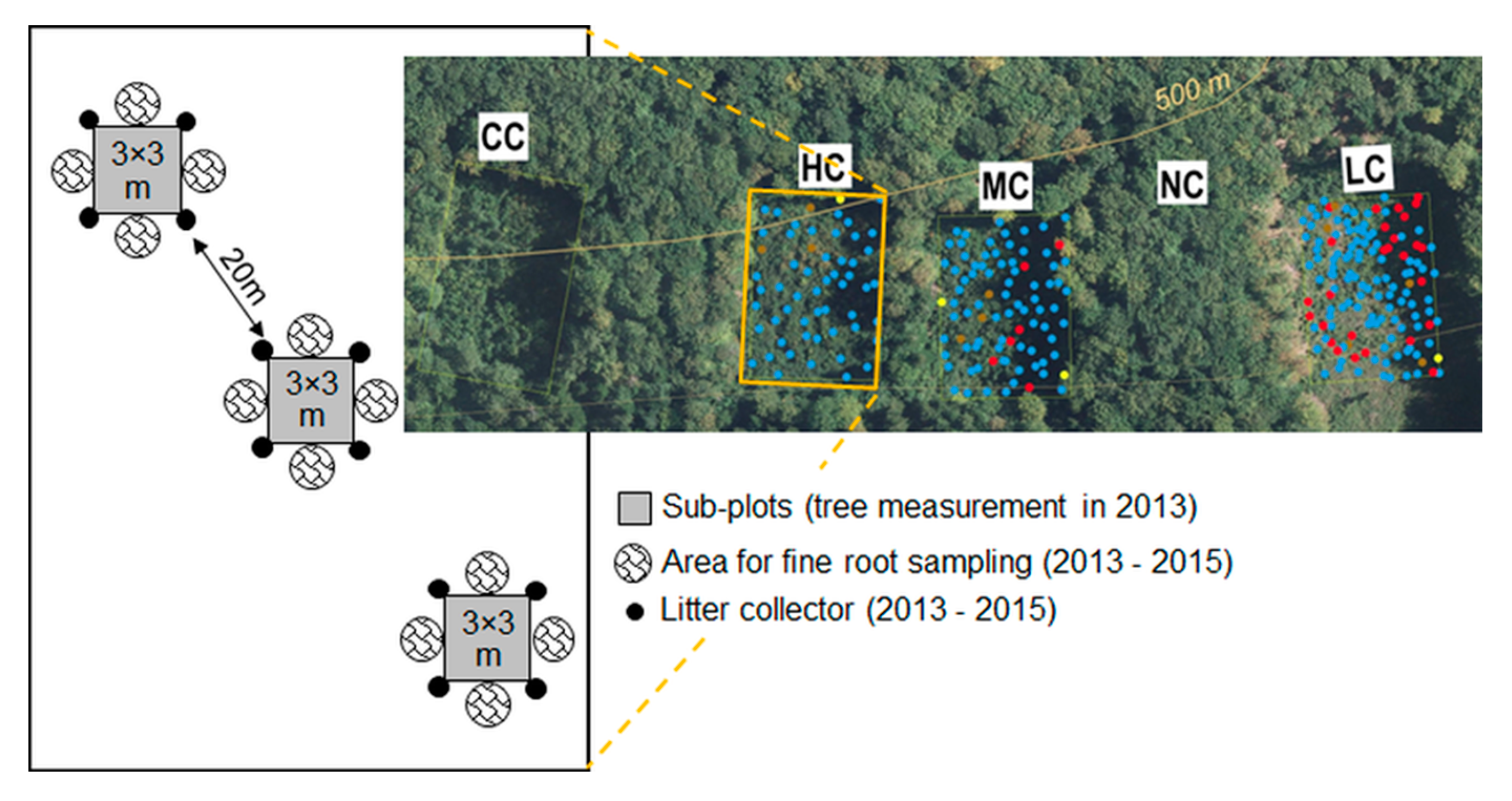 | Konôpka, Bohdan; Barna, Milan; Bosela, Michal; Lukac, Martin Biomass Allocation to Resource Acquisition Compartments Is Affected by Tree Density Manipulation in European Beech after Three Decades Journal Article Forests, 11 (9), 2020, ISSN: 1999-4907. Links | BibTeX @article{Konôpka2020,
title = {Biomass Allocation to Resource Acquisition Compartments Is Affected by Tree Density Manipulation in European Beech after Three Decades},
author = {Bohdan Konôpka and Milan Barna and Michal Bosela and Martin Lukac},
doi = {10.3390/f11090940},
issn = {1999-4907},
year = {2020},
date = {2020-08-27},
journal = {Forests},
volume = {11},
number = {9},
keywords = {},
pubstate = {published},
tppubtype = {article}
}
|
2019
|
 | Mihál, Ivan; Marušák, Róbert; Barna, Milan Dynamics of Fagus sylvatica L. Necrotization under Different Pollutant Load Conditions Journal Article Polish Journal of Environmental Studies, 28 (4), pp. 2755-2763, 2019, ISSN: 1230-1485. Abstract | Links | BibTeX @article{Mihál2019,
title = {Dynamics of \textit{Fagus sylvatica} L. Necrotization under Different Pollutant Load Conditions},
author = {Ivan Mihál and Róbert Marušák and Milan Barna},
doi = {10.15244/pjoes/92209},
issn = {1230-1485},
year = {2019},
date = {2019-04-01},
journal = {Polish Journal of Environmental Studies},
volume = {28},
number = {4},
pages = {2755-2763},
abstract = {The potential impact of acidic fluorine type of pollutants on the dynamics of European beech (Fagus sylvatica L.) stem bark and crown disease was investigated between 2004 (2007) and 2014 in three mature beech stands in Central Europe. The localities were 1.5 km, 7 km and 18 km from the pollution source: an aluminium plant. A decrease of necrotic disease with the increasing distance from the pollution source was revealed. Necrotization was highest nearest to the pollution source. The significance of the impact of necrotic disease was confirmed for the 2nd and 3rd tree classes. Necrotization was quantified using the indices of stem necrotization (ISN), crown necrotization (ICN) and necrotization of whole tree (IWTN). Over the period 2004 (2007)–2014, the values of ISN, ICN and IWTN decreased at all three localities. Significant positive relationships were found between the necrotization of the crown and stem of the same tree at all localities (Spearman’s correlation analyses R = 0.764; 0.597 and 0.755, P = 0.001; 0.01 and 0.001). Accordingly, the trees suffered from the necrotic damage at all parts in relation to their current health state.},
keywords = {},
pubstate = {published},
tppubtype = {article}
}
The potential impact of acidic fluorine type of pollutants on the dynamics of European beech (Fagus sylvatica L.) stem bark and crown disease was investigated between 2004 (2007) and 2014 in three mature beech stands in Central Europe. The localities were 1.5 km, 7 km and 18 km from the pollution source: an aluminium plant. A decrease of necrotic disease with the increasing distance from the pollution source was revealed. Necrotization was highest nearest to the pollution source. The significance of the impact of necrotic disease was confirmed for the 2nd and 3rd tree classes. Necrotization was quantified using the indices of stem necrotization (ISN), crown necrotization (ICN) and necrotization of whole tree (IWTN). Over the period 2004 (2007)–2014, the values of ISN, ICN and IWTN decreased at all three localities. Significant positive relationships were found between the necrotization of the crown and stem of the same tree at all localities (Spearman’s correlation analyses R = 0.764; 0.597 and 0.755, P = 0.001; 0.01 and 0.001). Accordingly, the trees suffered from the necrotic damage at all parts in relation to their current health state. |
 | Barna, Milan; Mihál, Ivan Bark necrotic disease in a beech thicket Journal Article Plant Protection Science, 55 (3), pp. 181-190, 2019, ISSN: 1212-2580. Abstract | Links | BibTeX @article{Barna2019,
title = {Bark necrotic disease in a beech thicket},
author = {Milan Barna and Ivan Mihál},
doi = {10.17221/117/2018-PPS},
issn = {1212-2580},
year = {2019},
date = {2019-01-01},
journal = {Plant Protection Science},
volume = {55},
number = {3},
pages = {181-190},
abstract = {Symptoms of non-specific bark necroses in beech trees of all ages have lately been described. We investigated the occurrence of bark necrotic disease in beech thicket and health status of the trees. Our objective was to examine how bark necrotic wounds persist and the regenerative potential of young beech thicket. The research experiment was carried out at two isolated localities in the Western Carpathians in the period 2015–2017. A terminal shoot (stem) and a lateral shoot (branch) of each of the 30 sampled beech trees were examined. Young beech stands were affected by the necrotic disease in 87–94% cases (stems 69–83%, branches 33–56%). Shoot diameter and age had a significantly negative linear correlation (P < 0.05) with the development of all analysed disease characteristics on the beech bark. The encouraging finding is a positive regenerative capacity of young beech trees. Over the same period more annual shoots were healed in comparison with those that were newly infected (10.8% on stems and 0.6% on branches). },
keywords = {},
pubstate = {published},
tppubtype = {article}
}
Symptoms of non-specific bark necroses in beech trees of all ages have lately been described. We investigated the occurrence of bark necrotic disease in beech thicket and health status of the trees. Our objective was to examine how bark necrotic wounds persist and the regenerative potential of young beech thicket. The research experiment was carried out at two isolated localities in the Western Carpathians in the period 2015–2017. A terminal shoot (stem) and a lateral shoot (branch) of each of the 30 sampled beech trees were examined. Young beech stands were affected by the necrotic disease in 87–94% cases (stems 69–83%, branches 33–56%). Shoot diameter and age had a significantly negative linear correlation (P < 0.05) with the development of all analysed disease characteristics on the beech bark. The encouraging finding is a positive regenerative capacity of young beech trees. Over the same period more annual shoots were healed in comparison with those that were newly infected (10.8% on stems and 0.6% on branches). |
2018
|
 | Djukic, Ika; Kepfer-Rojas, Sebastian; Schmidt, Inger Kappel; Larsen, Klaus Steenberg; Beier, Claus; Berg, Björn; Verheyen, Kris; Barna, Milan; Mihál, Ivan; et. al, Early stage litter decomposition across biomes Journal Article Science of the Total Environment, 628-629 (1), pp. 1369-1394, 2018, ISSN: 0378-1127. Abstract | Links | BibTeX @article{Djukic2018,
title = {Early stage litter decomposition across biomes},
author = {Ika Djukic and Sebastian Kepfer-Rojas and Inger Kappel Schmidt and Klaus Steenberg Larsen and
Claus Beier and Björn Berg and Kris Verheyen and Milan Barna and Ivan Mihál and et. al},
url = {https://www.sciencedirect.com/science/article/pii/S0048969718300123},
issn = {0378-1127},
year = {2018},
date = {2018-01-01},
journal = {Science of the Total Environment},
volume = {628-629},
number = {1},
pages = {1369-1394},
abstract = {Through litter decomposition enormous amounts of carbon is emitted to the atmosphere. Numerous large-scale
decomposition experiments have been conducted focusing on this fundamental soil process in order to understand the controls on the terrestrial carbon transfer to the atmosphere. However, previous studies were mostly based on site-specific litter and methodologies, adding major uncertainty to syntheses, comparisons and metaanalyses across different experiments and sites. In the TeaComposition initiative, the potential litter decomposition is investigated by using standardized substrates (Rooibos and Green tea) for comparison of litter mass loss at 336 sites (ranging from −9 to +26 °C MAT and from 60 to 3113mm MAP) across different ecosystems. In this study we tested the effect of climate (temperature and moisture), litter type and land-use on early stage decomposition (3 months) across nine biomes. We show that litter quality was the predominant controlling factor in early stage litter decomposition, which explained about 65% of the variability in litter decomposition at a global scale. The effect of climate, on the other hand, was not litter specific and explained b0.5% of the variation for Green tea and 5% for Rooibos tea, and was of significance only under unfavorable decomposition conditions (i.e. xeric versus mesic environments).When the data were aggregated at the biome scale, climate played a significant role on decomposition of both litter types (explaining 64% of the variation for Green tea and 72% for Rooibos tea).No significant effect of land-use on early stage litter decompositionwas notedwithin the temperate biome. Our results indicate that multiple drivers are affecting early stage littermass loss with litter quality being dominant. In order to be able to quantify the relative importance of the different drivers over time, long-term studies combined with experimental trials are needed.},
keywords = {},
pubstate = {published},
tppubtype = {article}
}
Through litter decomposition enormous amounts of carbon is emitted to the atmosphere. Numerous large-scale
decomposition experiments have been conducted focusing on this fundamental soil process in order to understand the controls on the terrestrial carbon transfer to the atmosphere. However, previous studies were mostly based on site-specific litter and methodologies, adding major uncertainty to syntheses, comparisons and metaanalyses across different experiments and sites. In the TeaComposition initiative, the potential litter decomposition is investigated by using standardized substrates (Rooibos and Green tea) for comparison of litter mass loss at 336 sites (ranging from −9 to +26 °C MAT and from 60 to 3113mm MAP) across different ecosystems. In this study we tested the effect of climate (temperature and moisture), litter type and land-use on early stage decomposition (3 months) across nine biomes. We show that litter quality was the predominant controlling factor in early stage litter decomposition, which explained about 65% of the variability in litter decomposition at a global scale. The effect of climate, on the other hand, was not litter specific and explained b0.5% of the variation for Green tea and 5% for Rooibos tea, and was of significance only under unfavorable decomposition conditions (i.e. xeric versus mesic environments).When the data were aggregated at the biome scale, climate played a significant role on decomposition of both litter types (explaining 64% of the variation for Green tea and 72% for Rooibos tea).No significant effect of land-use on early stage litter decompositionwas notedwithin the temperate biome. Our results indicate that multiple drivers are affecting early stage littermass loss with litter quality being dominant. In order to be able to quantify the relative importance of the different drivers over time, long-term studies combined with experimental trials are needed. |
2017
|
| Ferezliev, Angel; Tsakov, Hristo; Mihál, Ivan; Barna, Milan; Cicák, Alojz Peculiarities in structure according diameter in stands updet by the hurricane in the West Rhodopes. Journal Article Nauka za Gorata - Forest Science, (1-2), pp. 53-63, 2017, ISSN: 0861-007X. Abstract | Links | BibTeX @article{Ferezliev01.0,
title = {Peculiarities in structure according diameter in stands updet by the hurricane in the West Rhodopes. },
author = {Angel Ferezliev and Hristo Tsakov and Ivan Mihál and Milan Barna and Alojz Cicák},
url = {http://ife.sk/wp-content/uploads/2016/10/Rodopi-kalamity.pdf},
issn = {0861-007X},
year = {2017},
date = {2017-01-01},
journal = {Nauka za Gorata - Forest Science},
number = {1-2},
pages = {53-63},
abstract = {The structure and growth in diameter of created plantations, hit by hurricane winds in the Western Rhodopes in 1961 was investigated. Stand Visualization System (SVS) program was used, graphically
depicting data plantations in Microsoft Excel. The diameter structure was analyzed by distribution of the stems by natural degrees of thickness. The rank of the average diameter tree in the pure culture of Pinus sylvestris of 55 years old was established (51.6%) and in another section spruce (P. abies (L.) Karst) of filled with Scotch pine (P. sylvestris) saplings with an average stem rank of 56.6%.},
keywords = {},
pubstate = {published},
tppubtype = {article}
}
The structure and growth in diameter of created plantations, hit by hurricane winds in the Western Rhodopes in 1961 was investigated. Stand Visualization System (SVS) program was used, graphically
depicting data plantations in Microsoft Excel. The diameter structure was analyzed by distribution of the stems by natural degrees of thickness. The rank of the average diameter tree in the pure culture of Pinus sylvestris of 55 years old was established (51.6%) and in another section spruce (P. abies (L.) Karst) of filled with Scotch pine (P. sylvestris) saplings with an average stem rank of 56.6%. |
2016
|
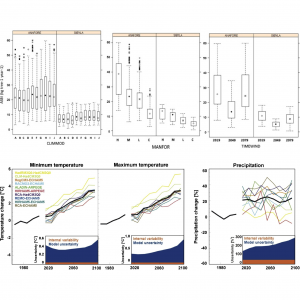 | Horemans, J A; Bosela, M; Dobor, L; Barna, M; Bahyl, J; Deckmyn, G; Fabrika, M; Sedmak, R; Ceulemans, R Variance decomposition of prediction of stem biomass increment for European beech: Contribution of selected sources of uncertainty. Journal Article Forest Ecology and Management, 361 , pp. 46–55, 2016, ISSN: 0378-1127. Abstract | Links | BibTeX @article{HOREMANS2016,
title = {Variance decomposition of prediction of stem biomass increment for European beech: Contribution of selected sources of uncertainty. },
author = {J.A. Horemans and M. Bosela and L. Dobor and M. Barna and J. Bahyl and G. Deckmyn and M. Fabrika and R. Sedmak and R. Ceulemans},
url = {http://www.sciencedirect.com/science/article/pii/S0378112715006064},
doi = {10.1016/J.FORECO.2015.10.048},
issn = {0378-1127},
year = {2016},
date = {2016-02-01},
journal = {Forest Ecology and Management},
volume = {361},
pages = {46–55},
abstract = {The contribution of selected sources of uncertainty to the total variance of model simulation results of
stem biomass increment – calculated from annual stem biomass predictions – of European beech
(Fagus sylvatica L.) was quantified. Sources of uncertainty were defined as the selected variables that
influence the total variance of the model results. Simulations were made: (i) for ten regional climate
models (RCMs) based on the IPCC scenario A1B and providing an ensemble of climate projections up
to 2100; (ii) with two forest model types (FMTYPEs); (iii) for four forest management intensities
(MANFORs); and (iv) for three time windows (TIMEWINDs), each spanning 15 years, starting in 2019,
in 2049 and in 2079. Both models, the empirical SIBYLA model and the process-based ANAFORE model,
were calibrated using experimental tree growth data from four plots in central Slovakia between 1989
and 2003. Three of these plots, representing the four MANFORs, were subject to different prior intensities
of thinning while one was left untouched as a control. The FMTYPE explained most of the total variance in
the simulation results (39.9%), followed by MANFOR (i.e. thinning intensity; 22.2%) and TIMEWIND
(12.0%), while the effect of RCMs on model uncertainty was limited (<1%). Stem biomass increment
results obtained from the two FMTYPES were different in absolute terms, but the models agreed well
in their relative response to RCM, to MANFOR and to TIMEWIND. The total variance of the predictions
was 10 times higher for the process-based model (ANAFORE) than for the empirical model (SIBYLA).
These observations are the reason for the large contribution of FMTYPE to the total variance of the simulated
stem biomass increment results.},
keywords = {},
pubstate = {published},
tppubtype = {article}
}
The contribution of selected sources of uncertainty to the total variance of model simulation results of
stem biomass increment – calculated from annual stem biomass predictions – of European beech
(Fagus sylvatica L.) was quantified. Sources of uncertainty were defined as the selected variables that
influence the total variance of the model results. Simulations were made: (i) for ten regional climate
models (RCMs) based on the IPCC scenario A1B and providing an ensemble of climate projections up
to 2100; (ii) with two forest model types (FMTYPEs); (iii) for four forest management intensities
(MANFORs); and (iv) for three time windows (TIMEWINDs), each spanning 15 years, starting in 2019,
in 2049 and in 2079. Both models, the empirical SIBYLA model and the process-based ANAFORE model,
were calibrated using experimental tree growth data from four plots in central Slovakia between 1989
and 2003. Three of these plots, representing the four MANFORs, were subject to different prior intensities
of thinning while one was left untouched as a control. The FMTYPE explained most of the total variance in
the simulation results (39.9%), followed by MANFOR (i.e. thinning intensity; 22.2%) and TIMEWIND
(12.0%), while the effect of RCMs on model uncertainty was limited (<1%). Stem biomass increment
results obtained from the two FMTYPES were different in absolute terms, but the models agreed well
in their relative response to RCM, to MANFOR and to TIMEWIND. The total variance of the predictions
was 10 times higher for the process-based model (ANAFORE) than for the empirical model (SIBYLA).
These observations are the reason for the large contribution of FMTYPE to the total variance of the simulated
stem biomass increment results. |
2015
|
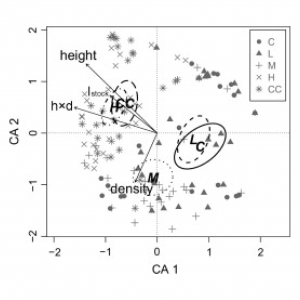 | Barna, M; Bošeľa, M Tree species diversity change in natural regeneration of a beech forest under different management Journal Article Forest Ecology and Management, 342 , pp. 93–102, 2015. Links | BibTeX @article{M.2015,
title = {Tree species diversity change in natural regeneration of a beech forest under different management},
author = {M. Barna and M. Bošeľa},
url = {http://www.sciencedirect.com/science/article/pii/S0378112715000195},
doi = {10.1016/j.foreco.2015.01.017},
year = {2015},
date = {2015-04-15},
journal = {Forest Ecology and Management},
volume = {342},
pages = {93–102},
keywords = {},
pubstate = {published},
tppubtype = {article}
}
|
2014
|
 | Bošeľa, M; Sedmák, R; Marušák, R; Sedmáková, D; Petráš, R; Barna, M Evaluating similarity of radial increment around tree stem circumference of European beech and Norway spruce form Central Europe Journal Article Geochronometria, 41 (2), pp. 136-146, 2014. Links | BibTeX @article{M.2014b,
title = {Evaluating similarity of radial increment around tree stem circumference of European beech and Norway spruce form Central Europe},
author = {M. Bošeľa and R. Sedmák and R. Marušák and D. Sedmáková and R. Petráš and M. Barna},
url = {https://www.degruyter.com/downloadpdf/j/geochr.2014.41.issue-2/s13386-013-0152-3/s13386-013-0152-3.xml},
year = {2014},
date = {2014-01-01},
journal = {Geochronometria},
volume = {41},
number = {2},
pages = {136-146},
keywords = {},
pubstate = {published},
tppubtype = {article}
}
|
2011
|
![Prirodzená obnova buka [Natural regeneration of beech]](https://ife.sk/wp-content/uploads/2016/10/2011_jarcuska-300x300.jpg) | Barna, M; Jarčuška, B Prirodzená obnova buka [Natural regeneration of beech] Book Chapter Barna, M; Kulfan, J; Bublinec, E (Ed.): Buk a bukové ekosystémy Slovenska, Chapter 11, pp. 227-248, Veda, Bratislava, 2011. Links | BibTeX @inbook{Barna2011,
title = {Prirodzená obnova buka [Natural regeneration of beech]},
author = {M. Barna and B. Jarčuška },
editor = {M. Barna and J. Kulfan and E. Bublinec },
url = {https://drive.google.com/file/d/0Bz8ojhHeiNclNWYwNzY4ZGMtYzQwYi00OGI2LThhNjQtMTU3NzA4NTc2OTQ3/view},
year = {2011},
date = {2011-01-01},
booktitle = {Buk a bukové ekosystémy Slovenska},
pages = {227-248},
publisher = {Veda},
address = {Bratislava},
chapter = {11},
keywords = {},
pubstate = {published},
tppubtype = {inbook}
}
|
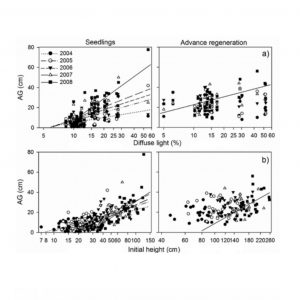 | Jarčuška, B; Barna, M Influence of light availability on height growth of naturally regenerated beech with different growth histories Journal Article Austrian Journal of Forest Science, 128 , pp. 53-65, 2011. Abstract | Links | BibTeX @article{Jarčuška2011,
title = { Influence of light availability on height growth of naturally regenerated beech with different growth histories},
author = {B. Jarčuška and M. Barna},
url = {https://drive.google.com/file/d/0Bz8ojhHeiNclNmEwNTkwODEtM2NjNC00Yzk3LTgwZDEtNTczYTQ3Y2ViZTZh/view},
year = {2011},
date = {2011-01-01},
journal = {Austrian Journal of Forest Science},
volume = {128},
pages = {53-65},
abstract = {We studied the influence of diffuse light supply on height growth dynamics in European beech natural regeneration. We evaluated the annual growth of the main axis over 5 yrs in 7-yr-old seedlings germinated 1 yr after a canopy release, and in 12-yr-old individuals of advance regeneration germinated 5 yrs before the release. In the advance regeneration, a significant response of annual growth to diffuse light was recorded six years after the canopy release. The correlation between the initial height and annual shoot growth in the seedlings over the study period was high (R2 ranged between Seite 54 Benjamín Jarcuška and Milan Barna 0.38 – 0.58); on the other hand, in the advance regeneration, significant correlation was not observed until the 7-th year after the overstory canopy release. We discuss the possible causes underlying the delay of height growth response to the current – modified light conditions in the advance regeneration.},
keywords = {},
pubstate = {published},
tppubtype = {article}
}
We studied the influence of diffuse light supply on height growth dynamics in European beech natural regeneration. We evaluated the annual growth of the main axis over 5 yrs in 7-yr-old seedlings germinated 1 yr after a canopy release, and in 12-yr-old individuals of advance regeneration germinated 5 yrs before the release. In the advance regeneration, a significant response of annual growth to diffuse light was recorded six years after the canopy release. The correlation between the initial height and annual shoot growth in the seedlings over the study period was high (R2 ranged between Seite 54 Benjamín Jarcuška and Milan Barna 0.38 – 0.58); on the other hand, in the advance regeneration, significant correlation was not observed until the 7-th year after the overstory canopy release. We discuss the possible causes underlying the delay of height growth response to the current – modified light conditions in the advance regeneration. |
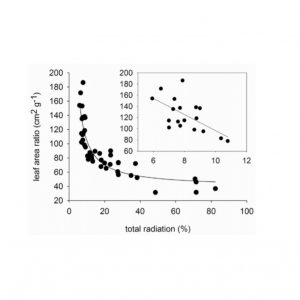 | Jarčuška, B; Barna, M Plasticity in above-ground biomass allocation in Fagus sylvatica L. saplings in response to light availability Journal Article Annals of Forest Research, 54 , pp. 151-160, 2011. Abstract | Links | BibTeX @article{Jarčuška2011c,
title = {Plasticity in above-ground biomass allocation in Fagus sylvatica L. saplings in response to light availability},
author = {B. Jarčuška and M. Barna },
url = {http://www.editurasilvica.ro/afr/54/2/jarcuska.pdf},
year = {2011},
date = {2011-01-01},
journal = {Annals of Forest Research},
volume = {54},
pages = {151-160},
abstract = {The paper presents the production and allocation of aboveground biomass in 7-yr-old saplings of European beech (Fagus sylvatica L.) growing along an environmental gradient with a total light transmittance (Tot) ranging from 6% to 80%. Non-overtopped individuals, not suppressed by surrounding saplings were sampled at the end of growing season. The total aboveground biomass production on the gradient varied within 1.7-261.0. Light in the log-log linear relationship accounted for 83% of this variability. The plants growing in the shade had lower mass of aboveground compartments, lower total leaf area, higher fraction of biomass allocated in foliar mass and lower in the in the woody mass compared to the plants growing in the high-light environment. The major changes in effects of light availability on biomass allocation occurred up to about 20% of Tot. Decreasing accessible light was responsible for a non-linear increase in interceptive leaf area per unit of biomass and decrease in amount of biomass allocated per a unit of branch and stem length – necessary for leaf display. There was a close correlation between mass of aboveground plant compartments, documented by Pearson’s r values of 0.98-0.99. Accompanied with different plant size, observed differences in biomass partitioning in response to light could be viewed as plastic adjustment to environmental heterogeneity in even-aged European beech saplings.},
keywords = {},
pubstate = {published},
tppubtype = {article}
}
The paper presents the production and allocation of aboveground biomass in 7-yr-old saplings of European beech (Fagus sylvatica L.) growing along an environmental gradient with a total light transmittance (Tot) ranging from 6% to 80%. Non-overtopped individuals, not suppressed by surrounding saplings were sampled at the end of growing season. The total aboveground biomass production on the gradient varied within 1.7-261.0. Light in the log-log linear relationship accounted for 83% of this variability. The plants growing in the shade had lower mass of aboveground compartments, lower total leaf area, higher fraction of biomass allocated in foliar mass and lower in the in the woody mass compared to the plants growing in the high-light environment. The major changes in effects of light availability on biomass allocation occurred up to about 20% of Tot. Decreasing accessible light was responsible for a non-linear increase in interceptive leaf area per unit of biomass and decrease in amount of biomass allocated per a unit of branch and stem length – necessary for leaf display. There was a close correlation between mass of aboveground plant compartments, documented by Pearson’s r values of 0.98-0.99. Accompanied with different plant size, observed differences in biomass partitioning in response to light could be viewed as plastic adjustment to environmental heterogeneity in even-aged European beech saplings. |
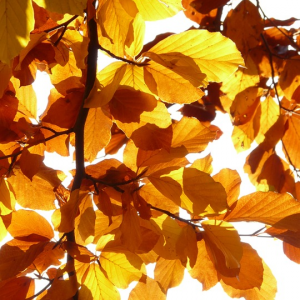 | Gömöry, D; Kukla, J; Schieber, B Taxonómia, fylogenéza a rozšírenie buka v Európe a na Slovensku Book Chapter Barna, M; Kulfan, J; Bublinec, E (Ed.): Buk a bukové ekosystémy Slovenska, pp. 19-36, Veda, vyd. SAV, Bratislava, 2011, ISBN: 978-80-224-1192-9. BibTeX @inbook{Gömöry2011,
title = {Taxonómia, fylogenéza a rozšírenie buka v Európe a na Slovensku},
author = {D. Gömöry and J. Kukla and B. Schieber},
editor = {M. Barna and J. Kulfan and E. Bublinec},
isbn = {978-80-224-1192-9},
year = {2011},
date = {2011-01-01},
booktitle = {Buk a bukové ekosystémy Slovenska},
pages = {19-36},
publisher = {Veda, vyd. SAV},
address = {Bratislava},
keywords = {},
pubstate = {published},
tppubtype = {inbook}
}
|
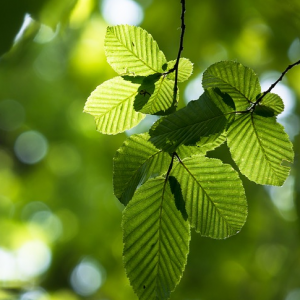 | Kukla, J Klasifikácia bukových geobiocenóz Book Chapter Barna, M; Kulfan, J; Bublinec, E (Ed.): Buk a bukové ekosystémy Slovenska, pp. 145-184, Veda, vyd. SAV, Bratislava, 2011, ISBN: 978-80-224-1192-9. BibTeX @inbook{Kukla2011,
title = {Klasifikácia bukových geobiocenóz},
author = {J. Kukla},
editor = {M. Barna and J. Kulfan and E. Bublinec},
isbn = {978-80-224-1192-9},
year = {2011},
date = {2011-01-01},
booktitle = {Buk a bukové ekosystémy Slovenska},
pages = {145-184},
publisher = {Veda, vyd. SAV},
address = {Bratislava},
keywords = {},
pubstate = {published},
tppubtype = {inbook}
}
|
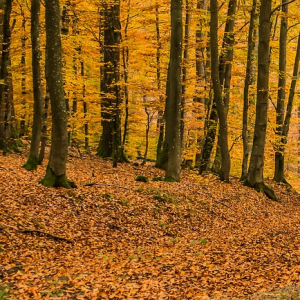 | Kukla, J Buk ako edifikátor lesných geobiocenóz Journal Article pp. 123-144, 2011, ISBN: 978-80-224-1192-9. BibTeX @article{Kukla2011b,
title = {Buk ako edifikátor lesných geobiocenóz},
author = {J. Kukla},
editor = {M. Barna and J. Kulfan and E. Bublinec},
isbn = {978-80-224-1192-9},
year = {2011},
date = {2011-01-01},
booktitle = {Buk a bukové ekosystémy Slovenska},
pages = {123-144},
publisher = {Veda, vyd. SAV},
address = {Bratislava},
keywords = {},
pubstate = {published},
tppubtype = {article}
}
|
| Barna, M; Schieber, B Climate response to forest management in beech stands Journal Article Folia Oecologica, 38 (1), pp. 8-16, 2011, ISSN: 1336-5266. Abstract | Links | BibTeX @article{Barna2011b,
title = {Climate response to forest management in beech stands},
author = {M. Barna and B. Schieber},
url = {http://ife.sk/wp-content/uploads/2016/10/2.pdf},
issn = {1336-5266},
year = {2011},
date = {2011-01-01},
journal = {Folia Oecologica},
volume = {38},
number = {1},
pages = {8-16},
abstract = {This work summarises the climatic data assembled in five submountain beech forest stands with different cutting patterns. The highest mean monthly air temperature values in March–July were obtained on a plot with 20-year-old beech thicket (T); in August–October on a stand after light shelterwood cuts (L) and in November–February in a closed stand (C – control). On the contrary, in the summer months June–July the C manifested the lowest temperature values, while in the winter (October–February) the temperature was the lowest on the open area (OA). The maximum one-hour (12-min averages were recorded) temperature increased with decreasing stand density of parent trees. The highest temperature value making 33.3 °C was measured in T, in OA reaching at the same time 32.9 °C, while on the C only 28.9 °C. The highest mean daily temperature showed
a similar trend. Maximum soil temperature at a depth of 5 cm on the C occurred from the end of July to the beginning of September. The same hold for this variable on T but with the values lower by about 0.5 °C. The soil temperature at 20 cm had the peak not sooner that in the first ten-day period of September. During the whole period, the difference between the rainfall on OA and the throughfall in the C was statistically significant (P ≤ 0.05). The highest monthly air humidity was always found on the OA, or on the T without parent stand (with variation from 72% in April to 95% in November). The lowest mean air humidity was observed in the densest adult stands: in March–October on plot L and in November–February (after the leaf fall) on the control.},
keywords = {},
pubstate = {published},
tppubtype = {article}
}
This work summarises the climatic data assembled in five submountain beech forest stands with different cutting patterns. The highest mean monthly air temperature values in March–July were obtained on a plot with 20-year-old beech thicket (T); in August–October on a stand after light shelterwood cuts (L) and in November–February in a closed stand (C – control). On the contrary, in the summer months June–July the C manifested the lowest temperature values, while in the winter (October–February) the temperature was the lowest on the open area (OA). The maximum one-hour (12-min averages were recorded) temperature increased with decreasing stand density of parent trees. The highest temperature value making 33.3 °C was measured in T, in OA reaching at the same time 32.9 °C, while on the C only 28.9 °C. The highest mean daily temperature showed
a similar trend. Maximum soil temperature at a depth of 5 cm on the C occurred from the end of July to the beginning of September. The same hold for this variable on T but with the values lower by about 0.5 °C. The soil temperature at 20 cm had the peak not sooner that in the first ten-day period of September. During the whole period, the difference between the rainfall on OA and the throughfall in the C was statistically significant (P ≤ 0.05). The highest monthly air humidity was always found on the OA, or on the T without parent stand (with variation from 72% in April to 95% in November). The lowest mean air humidity was observed in the densest adult stands: in March–October on plot L and in November–February (after the leaf fall) on the control. |







![Prirodzená obnova buka [Natural regeneration of beech]](https://ife.sk/wp-content/uploads/2016/10/2011_jarcuska-300x300.jpg)





